The giant saguaro cactus (pronounced sah-WAHR-oh) is one of the most iconic images of the American Southwest. It was featured in old western movies and is recently used as a common emoji. The saguaro is the largest cactus in the United States and grows only in the Sonoran Desert in the United States (mainly Arizona) and Mexico. Its range is limited by freezing temperatures and altitude.

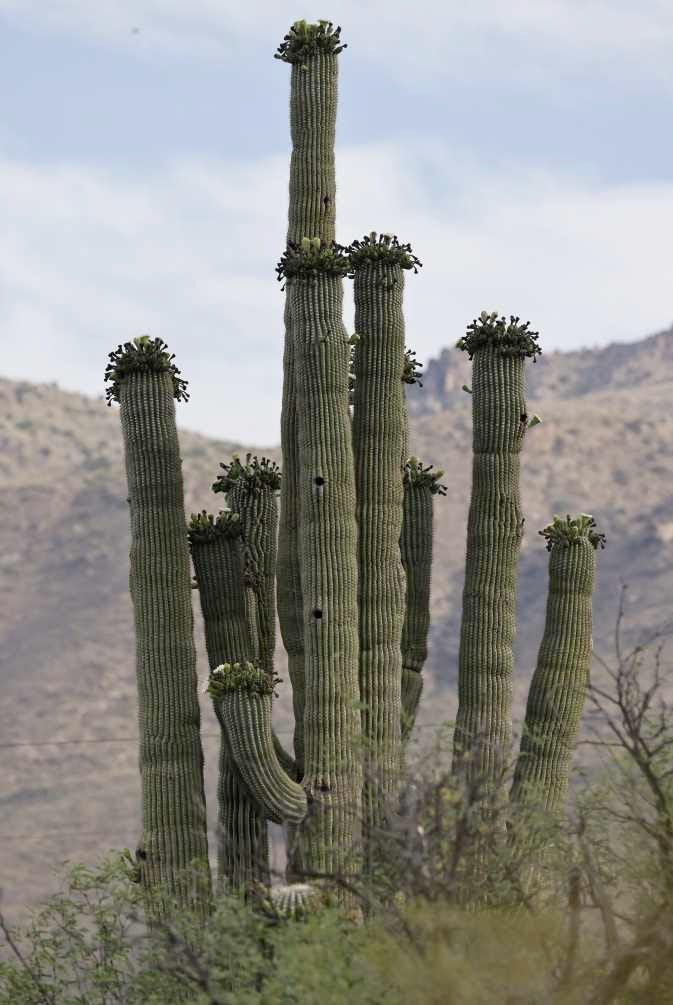
The scientific name for the giant saguaro is Carnegiea gigantea. It was named in honor of industrialist Andrew Carnegie (1835-1919), whose Carnegie Institution established the first Desert Botanical Laboratory in Tucson, Arizona in 1903. It now operates as Tumomoc: People & Habitats, a part of the University of Arizona’s College of Science.
The saguaro often begins life in the shelter of a "nurse" tree or shrub which can provide a shaded, moist habitat for germination and growth.
The average lifespan of a saguaro is about 150-175 years with some living as long as 200 years. It’s a slow growing species that may take 70 years to reach six feet in height. It’s around this age where saguaros may start growing “arms”. A mature saguaro averages about five arms. There’s a specimen in Ironwood Forest National Monument that has approximately 80 arms! The oldest known saguaro lived up to 300 years and the tallest known saguaro grew to be 78 feet. These record-breaking cacti will be featured in my next post.
The cactus may begin to produce flowers at 35 years of age. These blooms are Arizona’s state flower and appear on crown and the ends of the arms of the saguaro from late April to June. They are creamy-white, three-inch in diameter flowers with yellow centers. Not all the flowers of a single saguaro bloom at the same time. Instead, over a period of a month or more, only a few of the up to 200 flowers bloom each night. These flowers close around noon the following day, never to open again. The saguaro blossoms can only be fertilized by cross-pollination -- pollen from a different cactus and can be pollinated by bats. doves, quail, and cactus wrens among others.
After the blooms have died, oval fruit ripens just before the late-summer, early-fall rainy season. It’s green on the outside but splits open to reveal bright-red, pulpy fruit. Saguaro fruit was and still is an important food source to Native Americans of the region who used the flesh, seeds and juice. Inside the saguaro fruit are hundreds of tiny black seeds about the size of a pinhead. Multiplying that by the number of fruits one cactus produces over its lifetime and as many as 40 million seeds may be produced by one cactus. The odds are that perhaps only one will survive to become a fully grown cactus.
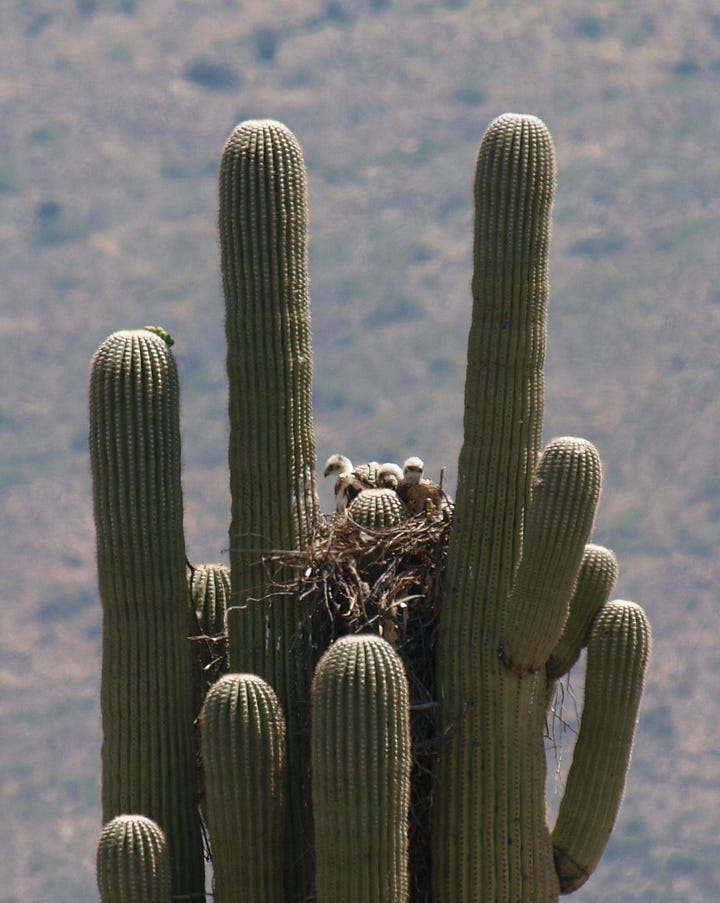
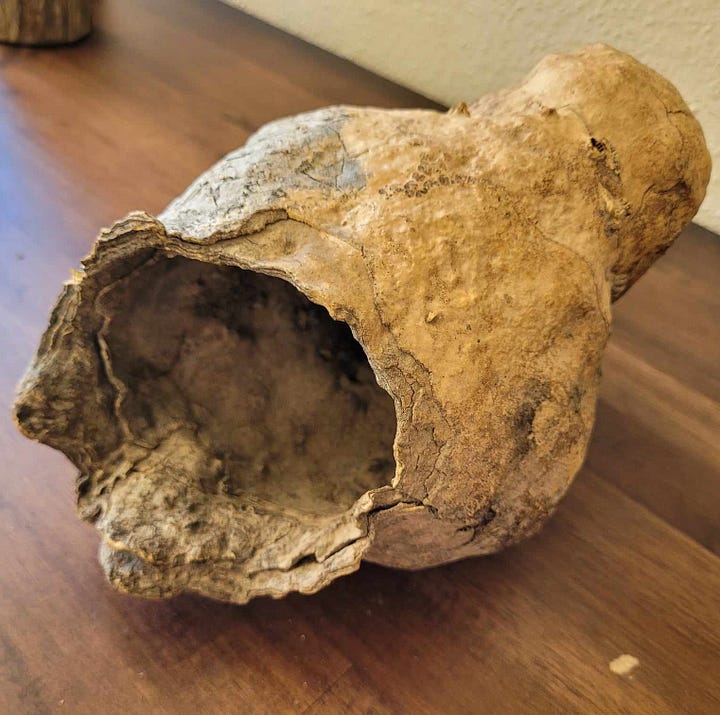
The saguaro cactus serves as a hotel for several desert wildlife. Some birds such as hawks build their nests among the arms of a saguaro. Gila woodpeckers are typically the first animal to carve out nest holes in the arms or trunk of the cactus. They wait several months before using it in order to allow the inner pulp of the saguaro to dry into a solid casing around the cavity (this is called a saguaro “boot”). After these birds raise their young, the nest holes become a valuable shelter for several other avian species such as western screech owls, flycatchers, and purple martins. An interesting fact about the interior of these cacti is that in the summer they can be as much as 15° colder than the outside environment.
Even though the giant saguaro is not an endangered species, Arizona has put into place some laws to protect it. Cutting down or destroying a saguaro is a felony even if it’s on your own property (you would need to get permission from the state). The biggest threat to the species is loss of habitat and exotic plant introduction. Currently, the Sonoran Desert has a problem with invasive species such as buffelgrass, fountain grass and red brome because they can outcompete the saguaro and increase the risk of fire danger. Other threats to the saguaro include vandalism, attempted transplant and theft.
Next time
Next post from the Four Corners of the Southwest is more about the saguaro. It will discuss and include pictures of the saguaros that have lived the longest, were the tallest and grew the most arms. In addition, “crested” saguaros will be featured. These are rare cactus that exhibit beautiful genetic mutations. We just can’t get enough of this Icon of the Sonoran Desert.

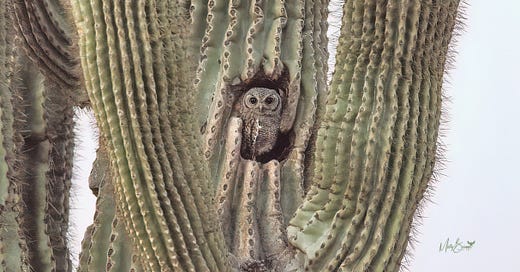





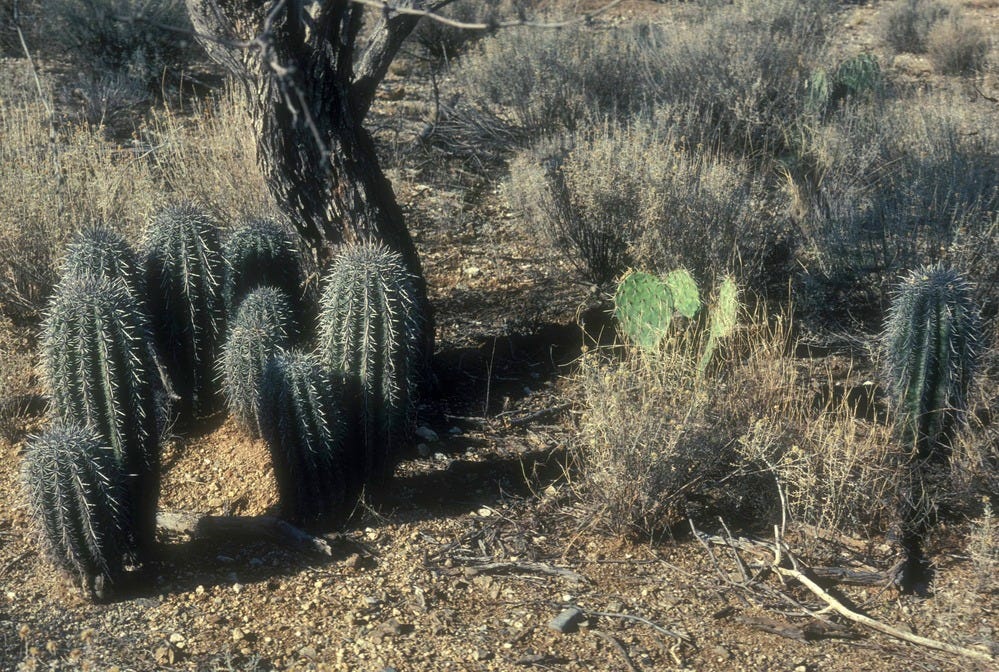
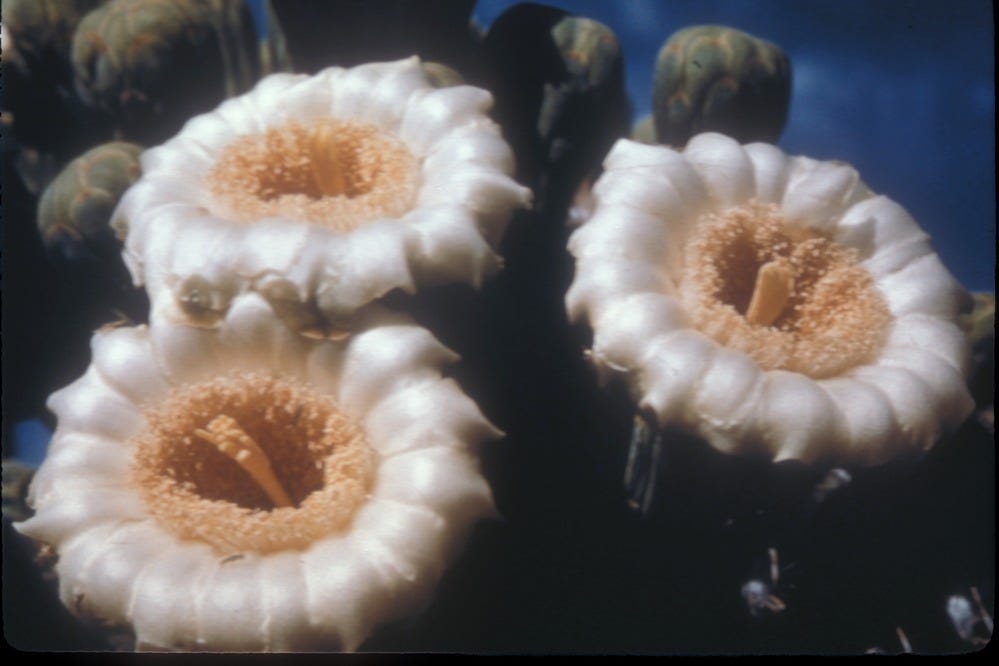
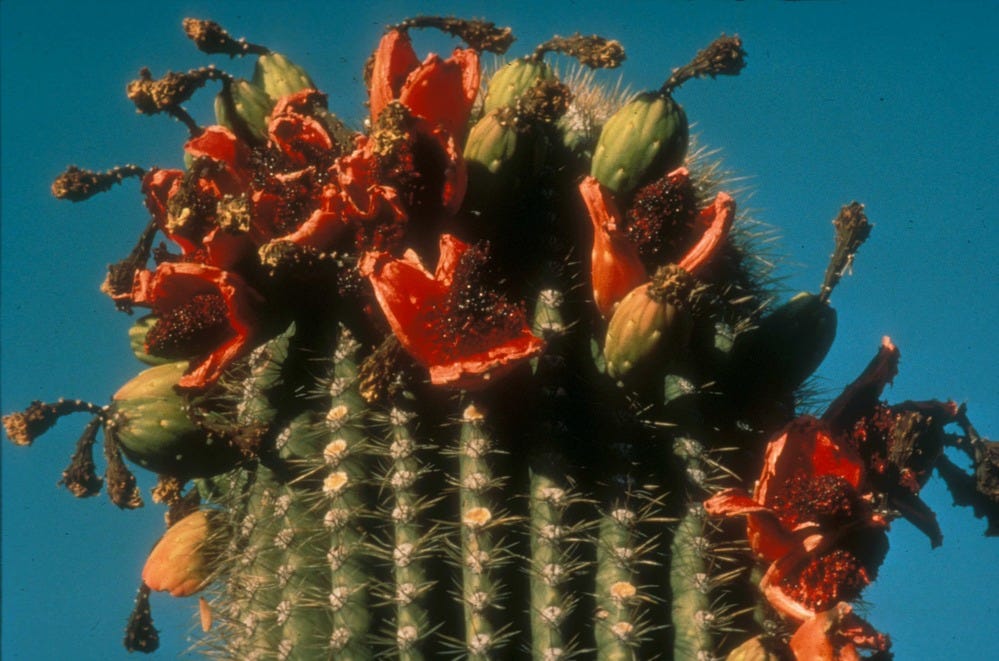
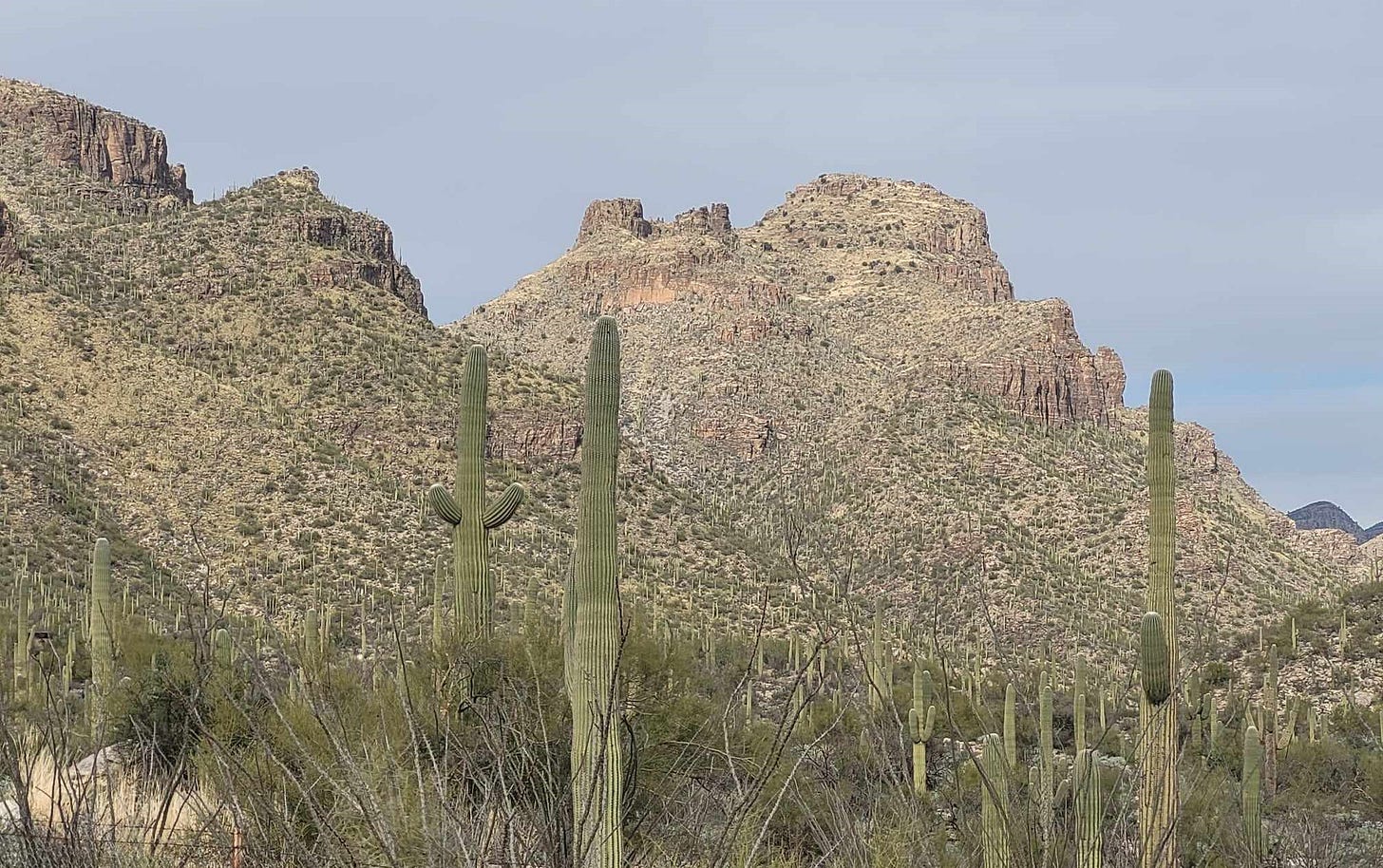
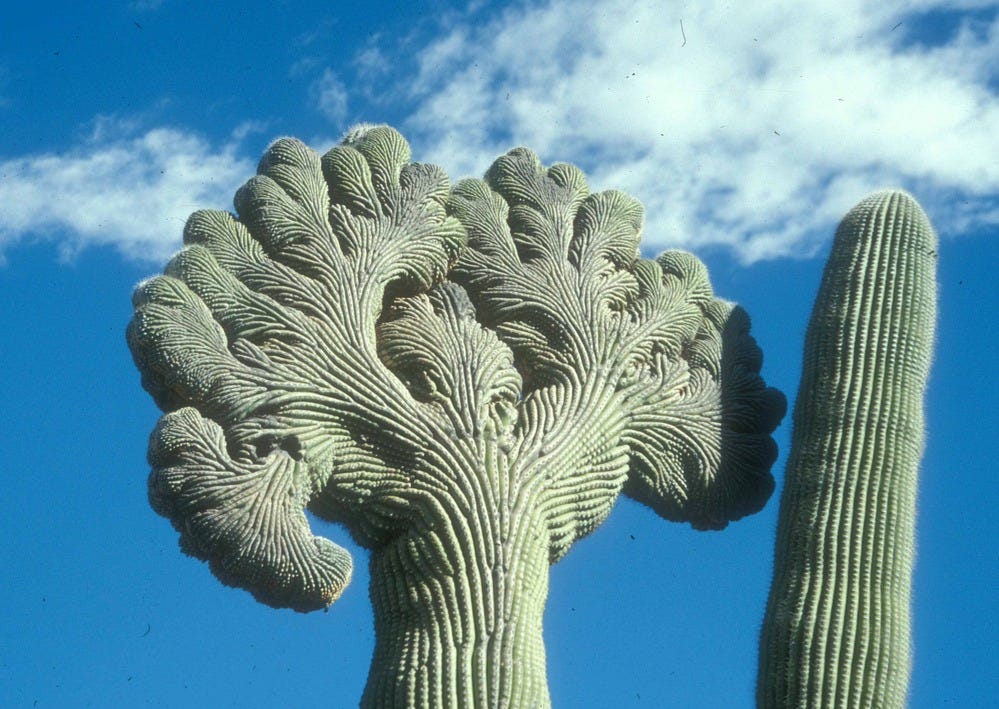
Excellent! I learned a few new things! Thank you!
Fascinating stuff, quite a few things I didn’t know, I always get smarter on your reads.